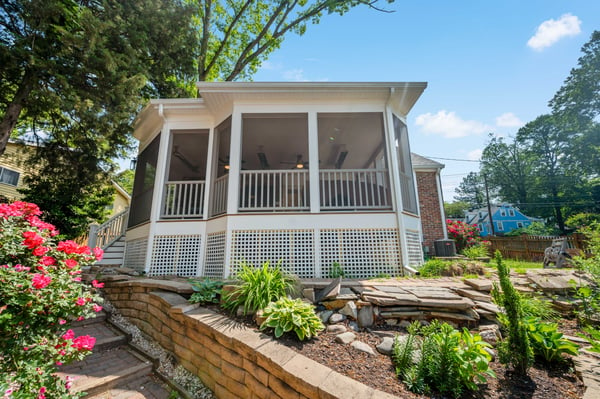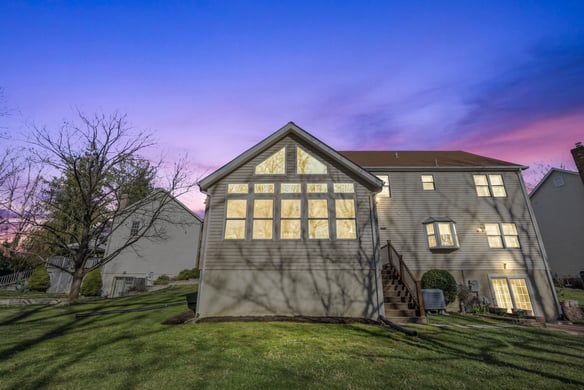
The Ultimate Guide to Preparing Your Home for Winter: October Edition
Winter is just around the corner, and with it comes colder temperatures and harsh conditions. It's essential to prepare your home for the winter months to ensure the safety and comfort of you and your family. In this ultimate guide, we will walk you through the key steps and preparations needed to get your home ready for winter. Whether it's conducting a home winter-readiness assessment, making essential outdoor preparations, or ensuring your indoor spaces are cozy and efficient, we've got you covered.
Understanding the Importance of Winter Home Preparation
Before we dive into the specific preparations, let's take a moment to understand why winter home preparation is so critical. Neglecting these preparations can lead to various risks and inconveniences. But when done right, a well-prepared home can provide numerous benefits throughout the winter season.
Winter is a time of cold temperatures, harsh weather conditions, and increased energy consumption. It is during this season that our homes are put to the test, and without proper preparation, they can suffer significant damage. By taking the necessary steps to winterize your home, you can ensure its longevity and protect yourself from potential hazards.
One of the risks of neglecting winter preparation is the possibility of frozen pipes. When temperatures drop below freezing, the water inside your pipes can freeze, causing them to burst. This can lead to extensive water damage and costly repairs. By insulating your pipes and taking measures to keep them warm, you can prevent this from happening.
Another risk is the potential for leaks. Cold weather can cause cracks and gaps in your home's structure to expand, allowing water to seep in. This can lead to water damage, mold growth, and compromised structural integrity. By sealing any cracks and ensuring proper insulation, you can protect your home from leaks and their detrimental effects.
In addition to these risks, neglecting winter preparation can result in increased energy bills. A poorly insulated home allows heat to escape, forcing your heating system to work harder and consume more energy. By improving insulation and sealing drafts, you can enhance energy efficiency and save on heating costs.

Furthermore, a home that is well-prepared for the winter season offers several advantages. By implementing simple measures like insulation improvements and heating system checks, you can enhance energy efficiency and reduce your heating costs. Additionally, a properly prepared home ensures a more comfortable living environment, protecting you and your loved ones from the cold and potential health issues.
During winter, the cold temperatures can have a significant impact on your health. Exposure to extreme cold can lead to hypothermia and frostbite, especially for vulnerable individuals such as the elderly and young children. By properly insulating your home and maintaining a warm indoor temperature, you can create a safe and healthy environment for everyone.
Winter home preparation also involves checking and maintaining your heating system. Regular maintenance ensures that your heating system is functioning optimally, providing consistent warmth and comfort throughout the season. It also helps identify any potential issues before they escalate into major problems.
Additionally, a well-prepared home can save you time and stress. By taking the time to prepare before winter arrives, you can avoid last-minute repairs and emergencies. This allows you to enjoy the season without worrying about unexpected issues that could disrupt your plans and cause unnecessary stress.
In conclusion, winter home preparation is crucial for protecting your home, reducing energy consumption, and ensuring a comfortable living environment. By addressing potential risks and implementing necessary measures, you can enjoy a hassle-free winter and have peace of mind knowing that your home is well-prepared for the challenges that the season brings.
Conducting a Home Winter-Readiness Assessment
It's important to start your winter preparations with a comprehensive assessment of your home. By identifying potential areas of concern, you can address them proactively and prevent any wintertime mishaps. Let's explore the key areas you should inspect and the tools you'll need for an effective home assessment.

Key Areas to Inspect in Your Home
Begin by inspecting your windows and doors for any drafts or gaps. These areas are common culprits for heat loss and should be properly sealed to maximize energy efficiency. Check your attic for proper insulation and ensure there are no leaks or signs of water damage. Don't forget to examine your roof for loose shingles or any other structural issues that may worsen during the winter months. It's also crucial to inspect your heating system, including the furnace, filters, and vents, to ensure they are in good working condition.
Tools Needed for a Comprehensive Home Assessment
For a thorough home assessment, you'll need a few essential tools. A flashlight will come in handy when inspecting dark or hard-to-reach areas, while a caulk gun and weatherstripping materials are essential for sealing any gaps or drafts. A ladder and safety equipment may be necessary for inspecting the roof or attic. Additionally, having a notepad and pen will help you document any areas that require attention and create a checklist for your winter preparations.
Essential Outdoor Preparations for Winter
Outdoor areas of your home also need attention before winter arrives. Taking the time to prepare your garden, lawn, and exterior can help preserve their condition and prevent potential damage caused by winter weather conditions.
Preparing Your Garden and Lawn for Winter
Gently remove any fallen leaves or debris from your garden and lawn to promote healthy growth come springtime. Consider mulching your garden beds to protect delicate plants from freezing temperatures. Prune any overgrown branches that could potentially cause damage during winter storms. Finally, drain your garden hoses and store them indoors to prevent freezing and damage.

Winterizing Your Home's Exterior
Protecting your home's exterior is crucial to avoid costly repairs down the line. Clean out your gutters and downspouts to prevent ice dams and water damage. Consider applying weather-resistant caulk to seal any gaps or cracks in your home's siding or foundation. Give your deck or patio a thorough cleaning and consider applying a protective sealant to prolong its lifespan. Lastly, ensure that your outdoor furniture and accessories are stored in a dry and secure place to prevent damage from snow and cold temperatures.
Indoor Preparations for a Cozy Winter
Now that we have covered outdoor preparations, let's focus on the key steps to ensure your indoor spaces are cozy, energy-efficient, and ready to withstand winter's chill.
Insulation and Heating System Checks
Insulation is key to retaining heat and reducing energy loss. Check the insulation in your attic and walls for any signs of damage or deterioration. Add or replace insulation where necessary to ensure maximum efficiency. Additionally, schedule a professional to inspect and service your heating system to ensure it's in optimal condition before the colder temperatures arrive. Clean or replace filters to maintain proper air quality and efficiency.
Preparing Your Living Spaces for Cold Weather
Make your living spaces warm and inviting for the winter season. Wash and store your summer linens and replace them with cozy blankets and flannel sheets. Consider adding area rugs to insulate cold floors and provide warmth underfoot. Hang thermal or heavy curtains to minimize heat loss through windows. Lastly, check the batteries in your smoke and carbon monoxide detectors to ensure they are working properly.

Emergency Preparations for Severe Winter Conditions
While we hope for a smooth winter season, it's crucial to be prepared for emergencies that can arise during severe weather conditions. Taking the time to create a winter emergency kit and having a plan in place will provide peace of mind and ensure your safety.
Creating a Winter Emergency Kit
Assemble a winter emergency kit that includes essential items such as extra blankets, warm clothing, non-perishable food, bottled water, flashlights, batteries, a battery-powered radio, and a first aid kit. Keep the kit easily accessible and make sure everyone in your household knows its location.
Planning for Power Outages and Other Winter Emergencies
Develop a plan for potential power outages and other winter emergencies. Identify a safe meeting place for your family members in case of evacuation and ensure everyone is familiar with emergency contact numbers. Keep your cell phones fully charged and consider investing in a portable generator for backup power if necessary.

With these comprehensive preparations in place, you can confidently welcome winter knowing your home is well-equipped to handle the colder temperatures and potential challenges ahead. By taking the time to assess and address key areas inside and outside your home, you can ensure a comfortable and stress-free winter season for you and your loved ones.
